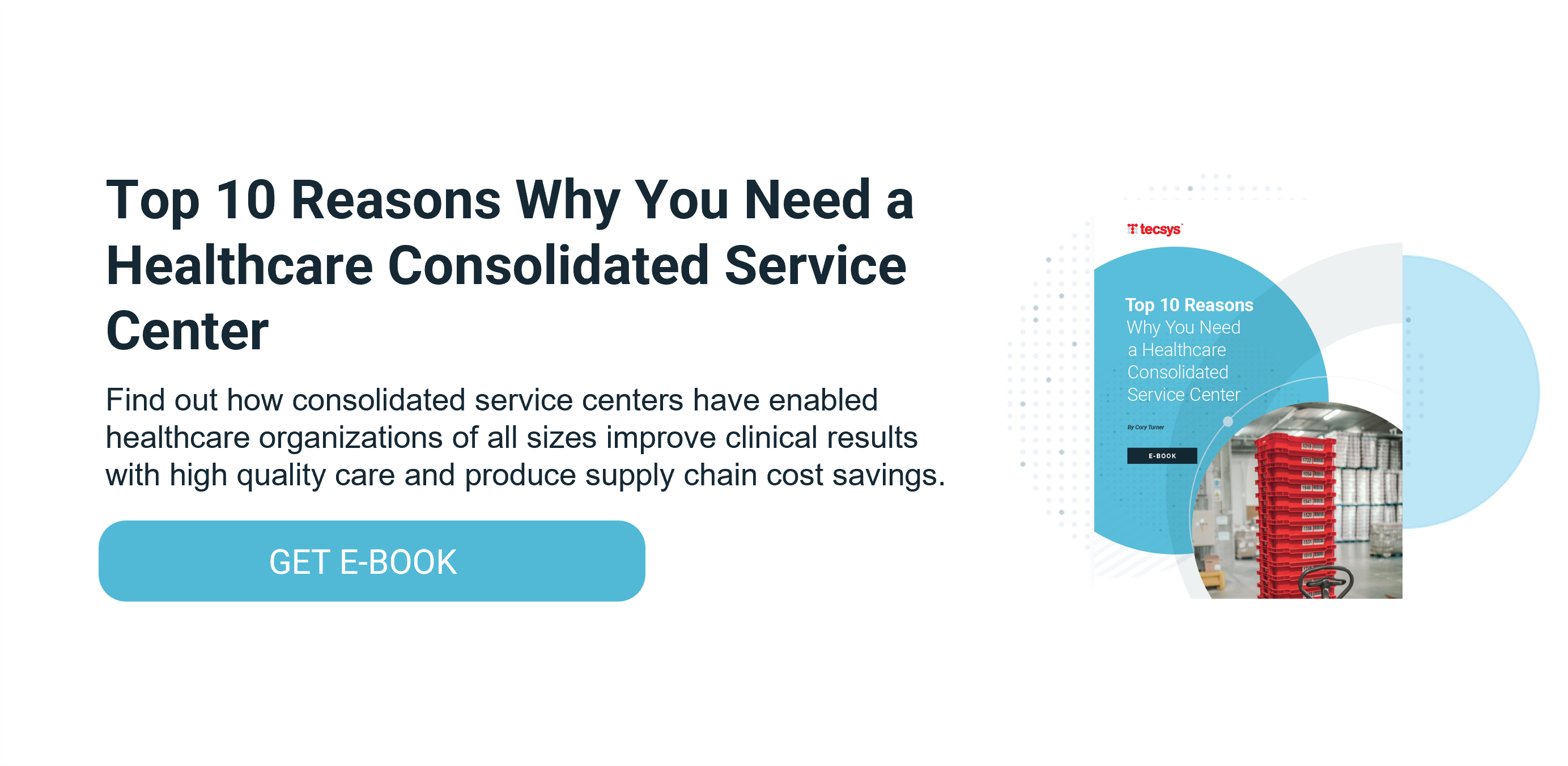Thinking CSC? Advice from Your Peers

The first step to improved supply chain performance and cost reduction in a health system is gaining visibility into supply inventory. Through a consolidated service center (CSC), you can centralize all supplies, processes and data into a single supply chain management (SCM) system for enterprise-wide transparency and control. The end result — better clinician support and patient care delivery.
Here are a few insights from supply chain professionals on how to approach the implementation of a CSC for your health system.
3 Pieces of Advice Regarding CSC Implementation
1. Build Your Business Case
Similar to the certificate of need (CON) that the U.S. requires of healthcare providers before making major changes, you should begin your CSC planning with a CON aimed at internal stakeholders stating the case for why your health system needs to consolidate distribution.
Because patient care is everyone’s priority, you should start by describing how the CSC will improve care delivery. Next, point to all the additional benefits: operational and financial.
Build out your vision for the CSC over the next three, five, 10 years — outlining the goals you hope to achieve at each stage. Your CFO and other leaders will want to know the anticipated return on investment (ROI) for the CSC and the timeline for achieving it.
During the exploration phase, you will likely discover that your health system has some hurdles to overcome before you can move forward. Be sure to consider not only the operational impacts of change, but the cultural ramifications as well.
“They [IDNs] are perhaps well-positioned for a CSC, but not right at that moment. You need to do some housekeeping activities and then prepare yourself to get that supply chain all centralized.”
– Greg Swanson, National Medical Logistics
2. Think of a CSC as a Marathon, Not a Sprint
A successful CSC strategy requires extensive research and planning, so perform your due diligence rather than rushing into a model that fails to support your needs.
Thankfully, you don’t have to reinvent the wheel. There are many health systems with established CSCs that can share their learnings. Seek their advice while building out your needs in terms of costs, physical location and technology platforms.
But don’t limit yourself to the healthcare industry. Retail, automotive, manufacturing and grocery have successfully leveraged distribution centers for decades, so it is worth speaking to supply chain leaders from these industries as well.
Just keep in mind a CSC is not a one-size-fits-all approach. What worked for one organization might not work for your health system. When evaluating other strategies and operations, always keep your specific needs and capabilities front of mind.
“It [a CSC] allows us to personalize our supply chain applications to our specific unique needs and makes our organization a lot more efficient and productive. Seeing the visibility from our CSC right to the point of use has been very important to us.”
– Donna Van Vlerah, Parkview Health
3. Simplify and Centralize Your Supply Chain
Think of the CSC as an extension of your existing supply chain. You want the complete process — from product receipt through to consumption and everything in between — to be integrated, streamlined and automated.
Take this opportunity to determine how you can overcome gaps in your supply chain operations through implementation of an SCM platform. For true supply chain process and data centralization, select one that automates supply tracking (e.g., RFID) from time of product receipt in the CSC through to the point of use (POU), and replaces the many disparate, bolt-on systems many clinical areas still use today for product documentation.
Real-time data and accurate reporting are critical to understanding your supply chain operations across the entire health system and allows for a more functional workflow. Ensure your CSC systems and processes generate the insights you need for strategic and proactive decision-making, forecasting and demand planning.
“I believe there will be a huge movement toward improving supply chain’s ability to know what’s in stock and where it’s located in order to better forecast, quantify and categorize it. I don’t know any other way to do that other than with a warehouse management system (WMS).”
– Matt Mentel, Strategic Optimization and Innovation Partners (SOIPUS)
Conclusion
The CSC is becoming known as the “control tower” of healthcare supply chain. When planning and designing what will become the nucleus of your supply chain operations, take the time to do it right.
If you are building the case for centralized distribution to present to your health system’s leaders, be sure to read this article where Ryan J. Rotar, executive director of supply chain at UNC Health, Chapel Hill, North Carolina, debunks some common misconceptions about CSCs.




